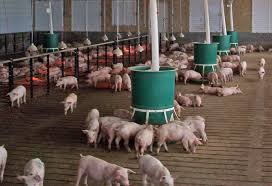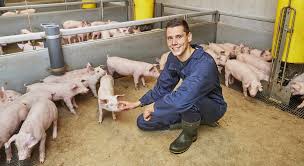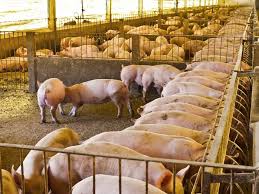In this article, various essential practices required to maintain healthy pigs and ensure a productive farm are discussed. These activities, known as management practices, are crucial for different classes of pigs to achieve and sustain high productivity and profitability.
Read Also: Various Types Of Fruits And Their Nutritional Value
Essential Management Practices in Swine Production

1. Creep Feeding: Young piglets from 10 days onwards should have access to a high-protein diet. They must be fed in a designated creep area where the sow cannot consume their feed.
The feed conversion rate of young piglets is very high, making creep feeding highly economical. This practice helps piglets adapt to solid food early, ensuring adequate nutrition as the sow’s milk supply decreases when piglets require more feed.
2. Provision of Iron: Piglets require iron supplementation, which can be provided through a 2ml iron dextran injection, pills, creep feed, or by swabbing the sow’s teats with an appropriate iron or copper-containing solution such as ferrous sulfate. Iron can also be administered through drinking water daily for the first five days of life.
If piglets are raised on concrete floors, clean soil with uprooted grass, including roots and earth, should be placed in a corner of the pen as a natural source of iron and copper.
Proper iron supplementation and good sanitary management allow piglets to double their birth weight within five to eight days. By weaning (four to six weeks of age), they should weigh 10–12 times their birth weight.
Growth rates in large litters are usually less uniform than in smaller ones, as larger piglets prefer the front teats, gaining weight faster than the rest. Piglets typically continue using the teats they initially selected.
3. Needle Teeth Removal: Piglet needle teeth should be clipped with clippers to prevent injuries to the sow’s teats, which could cause her to refuse nursing.
4. Castration: Castration involves the removal of testicles from male pigs to prevent unwanted breeding and improve carcass quality. It is performed on all unwanted males in the herd.
Castration can be done surgically or bloodlessly using a burdizzo or a rubber ring elastrator after restraining the animal. Surgical castration is performed within the first week of life, while bloodless methods can be applied within the first two weeks.
5. Tail Docking: Tail docking, primarily practiced in sheep, is done within the first week of life to prevent mating difficulties in adulthood. An elastrator can be used to dock the tail, and the wound should be treated to minimize pain.
6. Culling of Sows: A culling policy is essential to maintain herd productivity by removing sows at the appropriate time. Reasons for culling include lameness, injuries, farrowing complications, small litter sizes, poor mothering ability, and low fertility.
A sow that consistently produces good litters will eventually decline with age, usually after her tenth litter. A general guideline is to cull sows when their performance falls below the average of the gilts in the herd. A steady supply of pregnant gilts should be available to replace culled sows.
Read Also: Cultivation Methods For Different Fruit Trees And Bushes
Marking and Identification Methods

1. Ear Tagging: Used for identification, this process involves securing an identification tag to the ear’s pina while avoiding damage to blood vessels.
2. Tattooing: This involves marking the animal with a unique design recognizable by the farm manager.
3. Ear Notching: A system where specific ear cuts correspond to numerical values. A “V” cut at the top of the ear represents 1, at the tip represents 5, and below represents 3. The right ear denotes tens, while the left represents units, allowing for a unique identification number.
4. Skin and Horn Branding: Common in cattle, hot iron branding is used to imprint identification numbers or owner names on the skin or horns.
Proper management practices are essential for the growth and development of pigs on the farm. The farm manager must be skilled in these essential husbandry techniques to ensure high productivity and profitability.
Do you have any questions, suggestions, or contributions? If so, please feel free to use the comment box below to share your thoughts. We also encourage you to kindly share this information with others who might benefit from it. Since we can’t reach everyone at once, we truly appreciate your help in spreading the word. Thank you so much for your support and for sharing!

